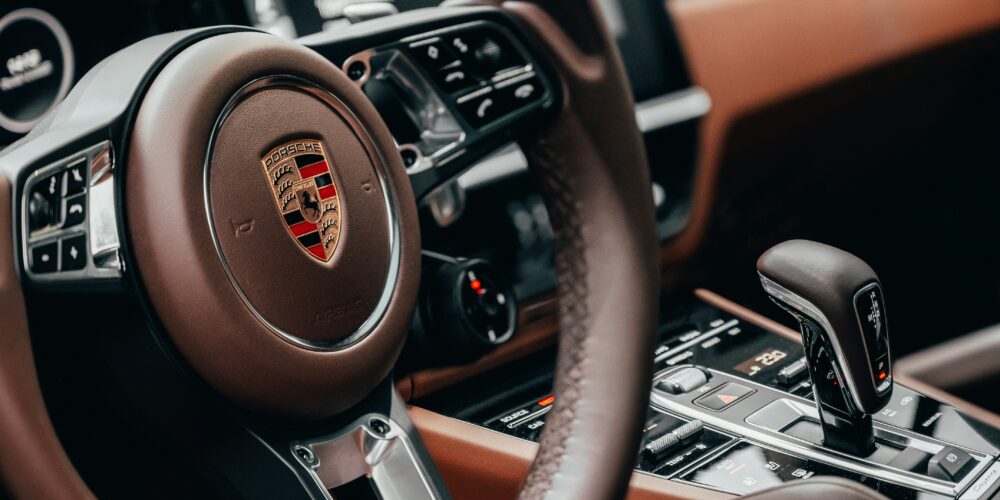Dual-Clutch Transmissions (DCTs) have gained popularity in the automotive world in recent years, not least for their ability to provide lightning-fast gear shifts and the perfect blend of performance and efficiency. However, like any advanced technology, DCTs come with their own set of challenges and potential issues. From overheating or jerky shifts at low speeds, to complex repair and maintenance issues, understanding the things to look out for with your DCT can help you stay ahead of any potential problems:
What is a DCT Gearbox?
A Dual-Clutch Transmission (DCT) is a type of automatic transmission that uses two separate clutches for odd and even gear sets. One clutch controls the odd gears (1st, 3rd, 5th, etc.), while the other controls the even gears (2nd, 4th, 6th, etc.). This design allows for near-instantaneous gear shifts without interrupting power flow to the wheels, which is a common issue in traditional automatic transmissions.
How Does a DCT Work?
The operation of a DCT is effectively a dance between two clutches and a computer-controlled system. The DCT uses two clutches to pre-select the next gear while the current gear is still engaged, which eliminates the lag typically associated with gear changes in other types of transmissions. When the driver accelerates, the DCT quickly alternates between the clutches, allowing for smooth and rapid gear shifts – one clutch disengages while the other engages, providing a seamless transition. All of this is controlled by an ECU that monitors various parameters such as engine speed, throttle position, and vehicle speed to determine the optimal time to shift gears.
Common Issues with DCT Gearboxes
Despite their advantages, DCTs can experience several common issues that drivers should be aware of. Due to their complexity and the number of moving parts involved in this system, it’s a given that there will be more that can go wrong throughout your daily driving life. While some issues are more concerning than others, keeping en eye out for the below can help you know when to bring your car in to be checked:
- Clutch Wear: Due to the nature of their operation, DCTs can experience significant clutch wear, especially in heavy traffic or as a result of aggressive driving. Over time, this can lead to clutch slippage and reduced performance that may need clutch replacement or repair to rectify.
- Overheating: DCTs are prone to overheating, particularly in stop-and-go traffic or during fast or ‘spirited’ driving. Overheating can cause the transmission to go into a “limp mode,” reducing power and preventing further damage, but it can also affect drivability.
- Jerky Shifts at Low Speeds: Some DCTs can exhibit jerky or rough shifts at low speeds, which can be particularly prevalent and annoying in city driving conditions. This is often due to the system struggling to balance clutch engagement smoothly.
- Software Issues: The ECU software that controls the DCT can sometimes have bugs or require updates. These issues can lead to poor shift quality or unexpected behaviour. Regular software updates from the manufacturer can mitigate these problems.
- Complex Repairs and Maintenance: DCTs are complex systems that require specialized knowledge and tools to repair. This can make maintenance and repairs more expensive compared to traditional automatic or manual transmissions.
- Noise and Vibration: Some DCTs can make unusual noises or vibrations, especially during gear changes. While this doesn’t always mean a serious problem, these symptoms can be concerning and may require inspection.
- Transmission Fluid Issues: Using the wrong type of transmission fluid or not changing it at recommended intervals can cause problems in a DCT. The correct and clean fluid is essential for the proper operation and longevity of the transmission.
Preventative Measures and Maintenance Tips
Keeping your DCT in good working order can often be as simple as keeping on top of maintenance and adjusting your driving habits. To keep a DCT gearbox running smoothly and to minimise the risk of issues, consider the following maintenance tips:
- Regular Servicing: Follow the manufacturer’s recommended service intervals for transmission fluid changes and inspections. This helps maintain optimal performance and prevents wear-related issues.
- Software Updates: It’s important to make sure that the ECU software is up-to-date in order to promote the best possible performance. Manufacturers often release updates to improve shift quality and address known issues.
- Avoid Heavy Traffic: When possible, try to avoid driving in heavy traffic for lengths of time to reduce clutch wear and overheating. Use manual mode in traffic to control gear selection and minimise strain on the clutches.
- Careful/Gentle Driving: It’s important to drive carefully and gently, especially during the transmission’s warm-up phase. To improve the longevity of your DCT, avoid aggressive acceleration and abrupt stops, which can accelerate clutch wear.
- Cooling System Maintenance: Keep the transmission cooling system in good condition – ensure that the cooling fans and fluid are functioning properly to prevent overheating.
Dual-Clutch Transmissions offer a compelling mix of performance and efficiency, making them a popular choice in many modern vehicles. However, like all advanced systems, they are not without their issues. By understanding common problems such as clutch wear, overheating, and software glitches, and by following proper maintenance practices, drivers can enjoy the benefits of a DCT while minimizing potential drawbacks.
For support with your DCT transmission, or to book your vehicle maintenance or DCT repairs, we are on hand to help. Simply get in touch with our team for more information, today.

